
A few weeks ago, I was proud to bring the Cartoon Research community some very exciting news about the new Cartoon Roots project in the works: a Kickstarter campaign that would help fund the restorations of 15 early silent Walter Lantz cartoons, featuring Dinky Doodle and friends—plus a home video release on DVD and Blu-ray, so the general public (and scholars!) could study and enjoy these rare bits of animated surrealism and comedy. I’m even prouder to report that the public ultimately responded with a resounding YES—we will support it! The initial goal to cover that project was met and exceeded. I heartily thank all the colleagues and readers here who’ve contributed and helped spread the word, and I can’t wait to get started on the project.

Tommy in the Stathes Archive with a 1930s 16mm print of a Dinky Doodle cartoon
With funding for the Dinky Doodle project going so well, why stop there? Stretch goals are very much a ‘thing’ on Kickstarter. A stretch goal was how my Cartoons On Film label was able to produce the Bobby Bumps volume in the Cartoon Roots series, as it became an extension of the Bray Studios collection that was funded in an equally popular way on Kickstarter.
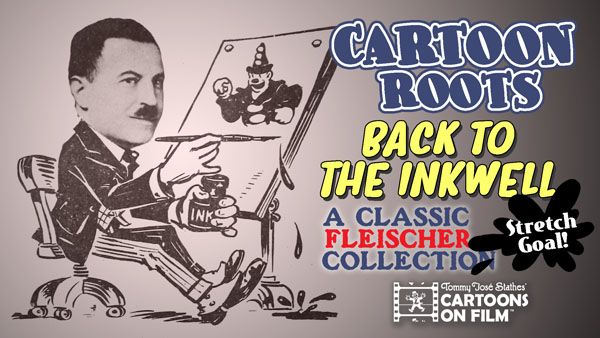
So, it’s time for a stretch goal as part of the current Kickstarter! In reviewing materials in the archive here and thinking about all sorts of long term goals, the decision I came to was a stretch goal for funding one initial batch of Max Fleischer’s early Out of the Inkwell films. This will be a really good opportunity to go back to a variety of prints and to rehabilitate the films in a way that hasn’t really been done before, especially not in our modern era of 2K scanning and HD film viewing. In doing so, I’ll be able to present some films that a few of you have seen before in far better looking versions, as well as some true rarities that have not been in distribution for decades. Have a look at the promo video for this new stretch goal, which was put together by our most talented Cartoon Researcher, Mssr. David Gerstein, with assistance from fellow Researchers, Devon Baxter and Steve Stanchfield:
Since most readers are already aware of the Fleischer Inkwell films to some extent, I’m going to keep this post brief and say that if you are a fan of Fleischer animation and especially Max’s early films, you should head over to the Kickstarter to read a bit more about what this additional Cartoon Roots project will entail. I’ll reiterate here that if you’ve previously pledged for the new Dinky Doodle collection, or if you’re coming into the Kickstarter anew and want to help with funding *and* receive both collections when they’re completed, you’ll need to pledge for Stretch Goal #2 (at the very least).

Another point to consider is that the Inkwell series, which debuted in 1918, brought us a beloved clown character—who would eventually be named Ko-Ko a few years into production. While I do plan to do similar things with material spanning the entire silent era, this initial Cartoon Roots project concerning the Inkwell films will cover the period of about 1919 to 1923 or so. The character in question was initially known as the Goldwyn-Bray Clown (a nod to producer Bray and distributor Goldwyn, in 1919-1921) and later simply as ‘the clown.’ Later, in the mid-20s studio animators like Dick Heumer would stylize the character, with the entire series gradually moving away from their signature rotoscoping that had first defined the character in such a distinct way.
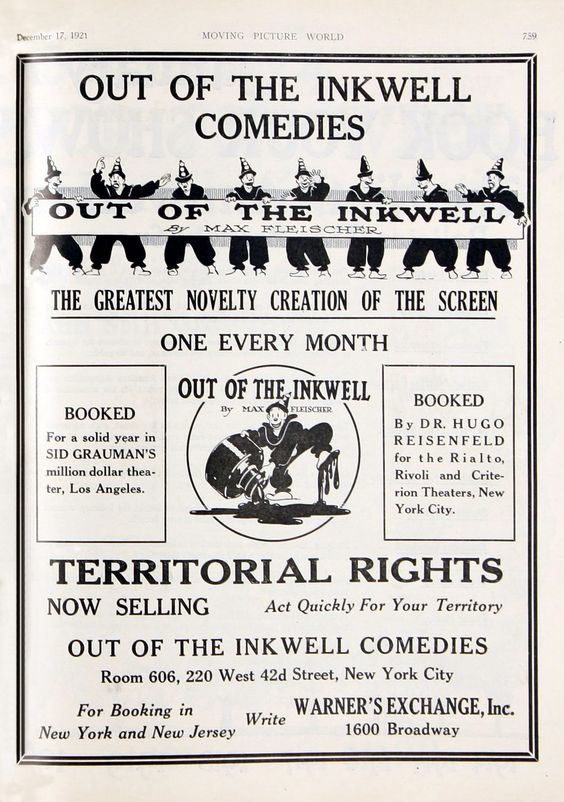
While most fans and enthusiasts know Ko-Ko in his Huemer-esque form, we’re focusing on the earlier rotoscoped clown in this restoration effort. It’ll be a great opportunity to get a good look at how the Fleischer brothers’ then-new technology was really put to the test, and how it distinguished their work from all of their peers’ output at that point in time. I’m sure contemporary audiences were quite stunned by rotoscoping when it was still so new, and I wonder if any viewers had felt a sort of ‘uncanny valley’ effect from it.
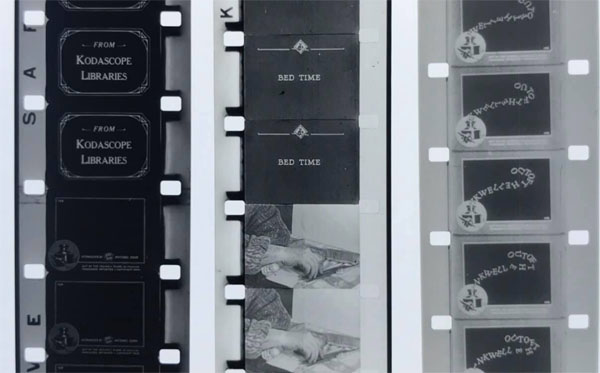
A few elements of the same early Inkwell film, in the Stathes Collection. It’s often necessary to hunt down multiple prints and negatives of the same early films, when possible, since some copies look better and are more complete than others.
A lot of these films have been difficult to see in really good prints over the years, despite how famous they initially were. Quite a few are still considered lost, and a bunch of others remain quite rare, with only a few examples known in one or two collections around the world. Thankfully, several were reprinted over the decades for different purposes. Many of the Bray-era titles remain very rare, for example. In 1920 or so, a lot of their library was reprinted in 28mm safety stock for non-theatrical showings. I managed to acquire a few such prints several years back, and these already proved crucial in our past restorations of The Tantalizing Fly (1919) and The Circus (1920). I want to work on at least one more of the Bray Inkwell films that I have in this form, as part of this project: The Kangaroo (1920), and the 28mm print to be used may very well be the only complete (and good looking) print of this film that is currently known to exist.
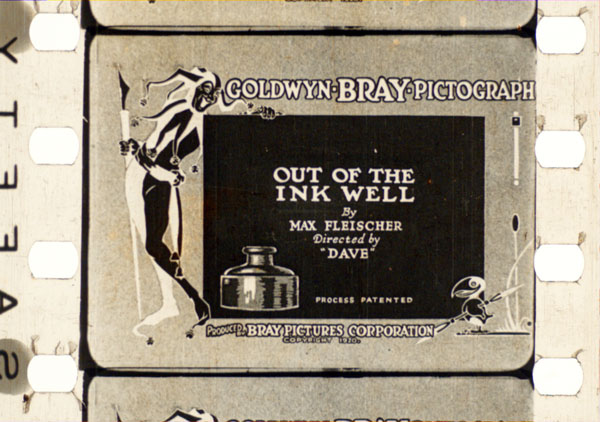
Original title card from a Bray Inkwell short, unseen this way by the public since the 1920s. From extremely rare 28mm print in the Stathes Collection.
Some of the Brays, and especially several of the later Inkwell Studios shorts from the early to mid-20s, were offered as part of the Kodascope Libraries’ nontheatrical 16mm offerings in the 1920s and 1930s. These Kodascope prints, and in some cases very good old dupes of them, will serve as source material for restorations. Both the Brays and some of the slightly later Inkwell were also printed up again for television in the 1950s, and occasionally, footage may be sourced from some of those versions when the picture is good enough. In some cases, we may even be able to access a 35mm print or two for this project, from outside sources—just as we were able to do with The Ouija Board (1920) for our Cartoon Roots: Halloween Haunts project. It’s one of the extremely few Bray Inkwells that happened to still survive in a 35mm element.
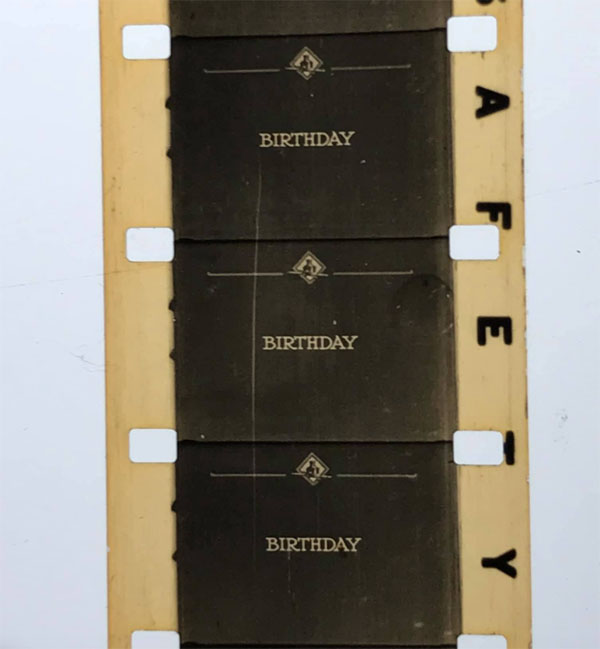
Frames from a rare tinted 16mm Kodascope print of “Birthday” (1922), printed on 1924 Kodak stock. Stathes Collection.
This is only the start of what I plan as an ongoing effort to restore even more of the films. As I noted in the earlier Dinky Doodle post here, I welcome any readers and colleagues who may have leads on more prints of these films and other related materials to send a note my way, which you can do through this link. In the meantime, let’s cross our fingers for a successful stretch goal on Kickstarter! Many thanks again to our community for all of its ongoing support.


 Tommy Stathes is an animation historian specializing in silent era cartoons. He resides in New York and frequently holds public screenings throughout the city. You can read more about his work, his collection and his research on his website:
Tommy Stathes is an animation historian specializing in silent era cartoons. He resides in New York and frequently holds public screenings throughout the city. You can read more about his work, his collection and his research on his website: 
















































It was a no-brained for me to pledge for both of these sets. Silent animation is an era that I am not well-informed on, but eager to learn more about. The restoration work on these Cartoon Roots sets is amazing, and I can’t wait to see more titles in the series. Keep up the good work!
I literally can’t get my money out of my pocket as fast as I want to in support of your projects Tommy! I’m really looking forward to both of the new sets. Best of luck!
Hey, Tommy, in the ad/press release above from 1919 they announce the world’s first color cartoon will be coming soon! Do you know what cartoon that was? Do you have a copy? Does anyone have a copy?
I’m happy to support both projects. These bring me back to my youth. You can’t see these any where else.